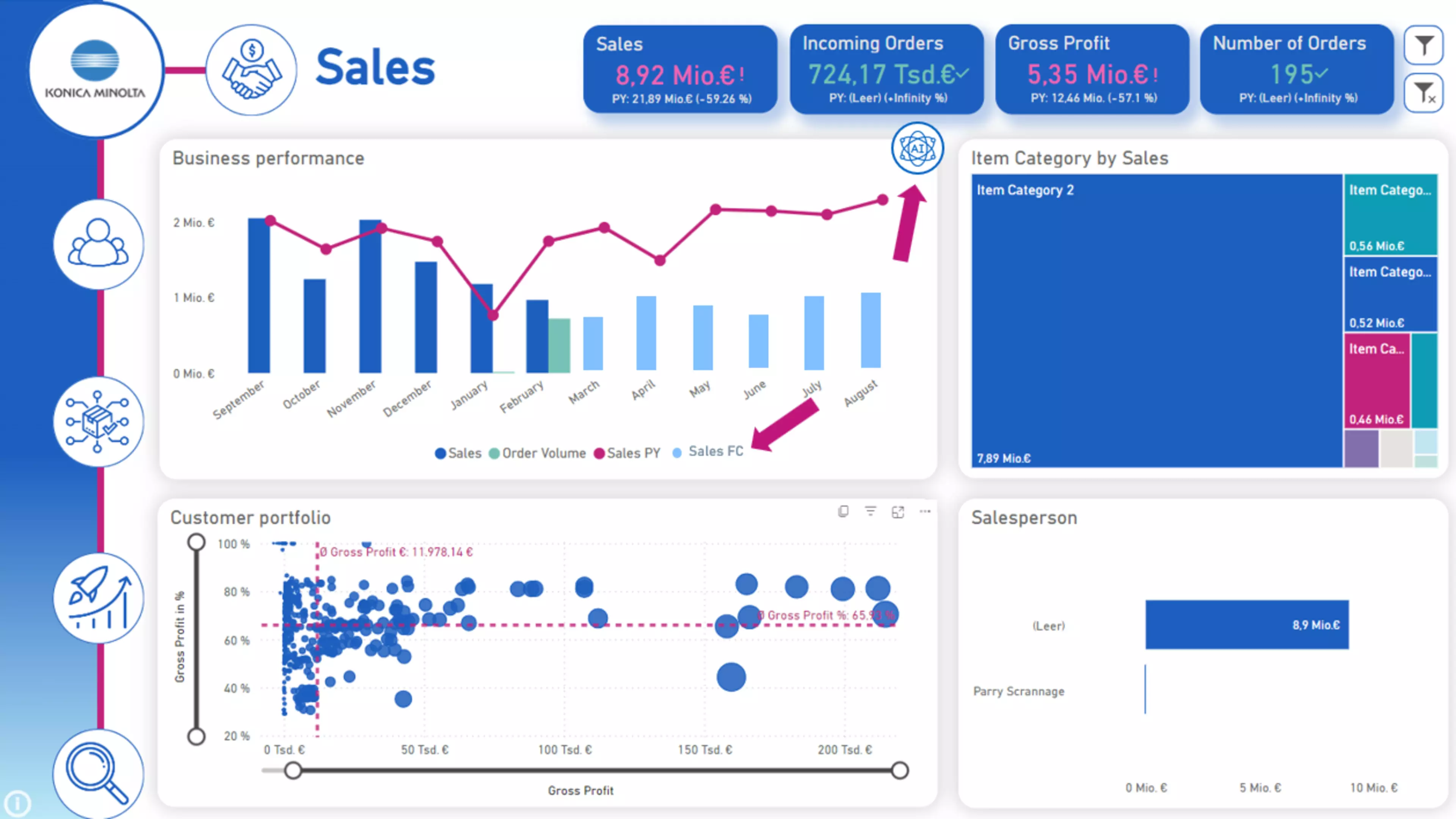Medium-sized companies have to shell out a lot of money if they want to add reliable, AI-supported forecasting functions to their business intelligence systems. It would be appealing to look into the future: not just predicting turnover for the next month (this is usually not difficult, you mainly have to look at the order backlog), but for the next 12 months. The problem is that you need data scientists for this and they are currently among the most sought-after - and therefore most expensive - specialists of all.
Sophisticated AI model in just one week
This is why the technology and managed service provider Konica Minolta had its own team of data scientists develop an AI model that enables forecasts “out of the box”. “This naturally raises the question: don't such models always have to be tailored to the individual company?” says Markus Bauten, Manager Business Solutions at Konica Minolta. And gives the answer himself: “Yes, actually they do. But our model already delivers around 80 percent in the standard version. We only have to take care of the remaining 20 percent on site at the customer's premises, in particular training the model with the company's data. This is done within a week.” It is obvious that this approach is much cheaper than a conventional, lengthy consulting project.





